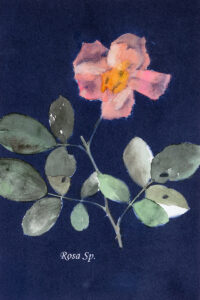 Born and raised in the Shenandoah Valley of Virginia, my grandmother taught me to love roses, and to value family and history. My dad instilled a reverence for the land, and raised me to be independent and to think for myself. My mother supplied the steel that held us all together.
Born and raised in the Shenandoah Valley of Virginia, my grandmother taught me to love roses, and to value family and history. My dad instilled a reverence for the land, and raised me to be independent and to think for myself. My mother supplied the steel that held us all together.
I earned a BFA in painting and printmaking from Virginia Commonwealth University, but life took me in another direction. Instead of making art I married, had children, worked, and made a family. Then my mid-life crisis propelled me to New Mexico where I sought adventure and romance. I found both.
For fifteen years I traveled the state, including all the tribes, offering wastewater technical assistance to rural communities before retiring in 2015. Luckily, I discovered the art and craft of cyanotypes and rediscovered my passion for making prints. I happily live and print in Albuquerque with my forever love and our dog, Peach.
Artist Statement
I stumbled on the art of cyanotype prints when, as part of my study of herbalism, I came across sun prints of British algae made by Anna Atkins (1799-1871). She is famous as the author of the first book of photographs which she published in 1843. This process of printing photos in Prussian blue was discovered in April of 1842 by Sir John Herschel (1792-1871), three years after the invention of silver photography.
Cyanotype prints can be made in essentially two ways: First, an object of interest (usually a plant, in my case) is placed on paper treated with the appropriate chemicals, then exposed to the sun, the paper is washed with water and hung to dry. This print is called a “Photogram.” It is a one-of-a-kind print that is camera-free. The second procedure is to make a negative of a photo of interest sized to fit the treated paper. The negative is placed on the paper, exposed to the sun, then the paper is washed and hung to dry. This print is known as a “Photograph.” Beyond these basic Prussian blue prints, there are numerous techniques and substances that can be used to tone prints in various colors. The choice of papers will also influence the look of the final print.
While there now exist new formulations for the sensitizer used on the paper, I have chosen to work with Herchel’s original chemicals known as Classic Cyanotype and to use the sun to expose the images. Exposure times range from several minutes (typical) to hours if using the wet paper method. All but one of my images on display are Photograms. The one Photograph is titled “Day Lily III.” I am most content when I am printing.
